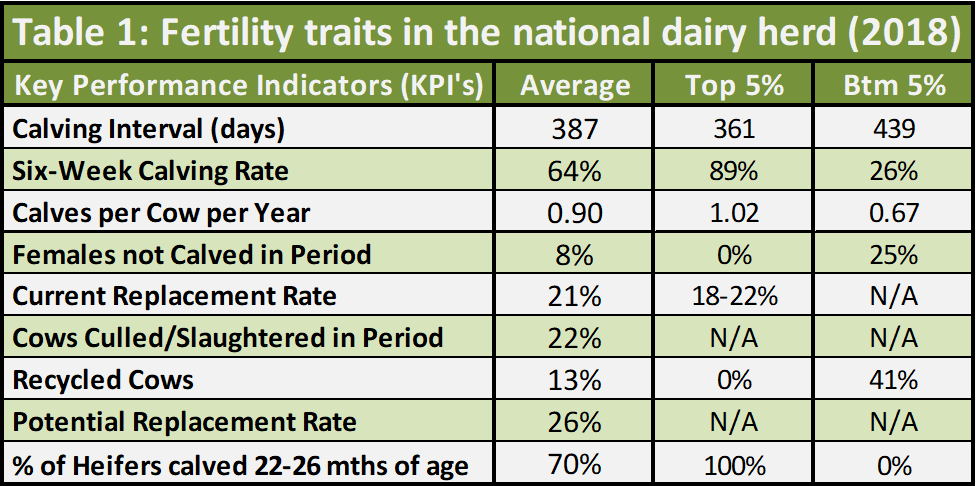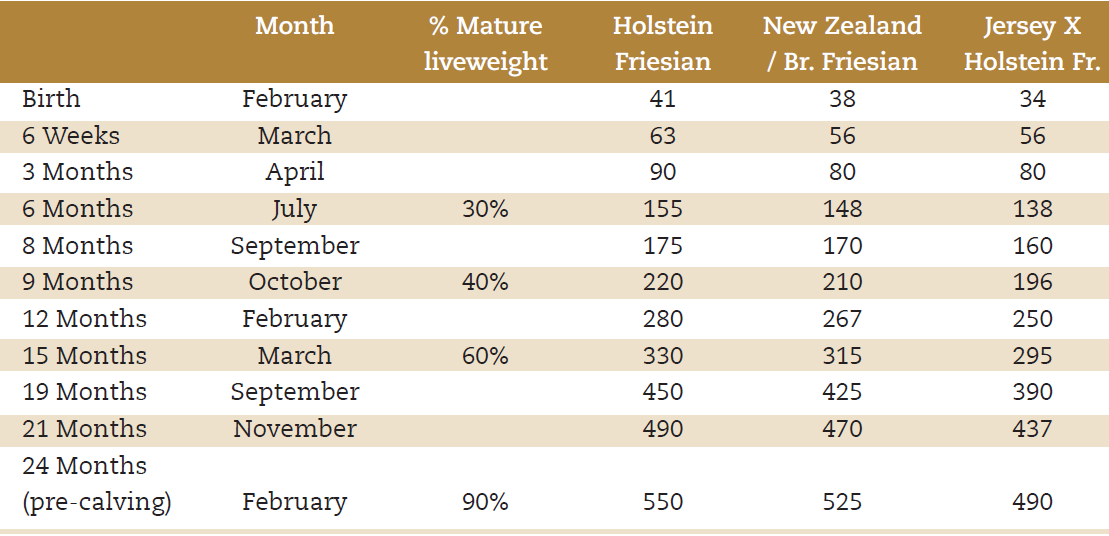Following last week’s release of the HerdPlus® Dairy Calving reports, ICBF can report an improvement in the fertility performance of the national dairy herd. The average calving interval improved by 3 days from 390 days in 2017, to 387 days in 2018 (See graph above).
Another important fertility parameter six-week calving rate remains consistant with previous years’ data as it remains at 64%. In the 2018 period there was 0.90 calves/cow/year, this is down from 0.91 in 2017. The National Statistics are based on data from 13,972 herds.
While these figures are encouraging, we are still a considerable way off the targets identified by Teagasc as being required to ensure a profitable dairy industry. For example, the average calving interval of 387 days compared to an industry target of 365 days. Similarly, the six-week calving rate is at 64% compared to an industry target of 70%. Therefore, it’s important that we continue to focus on high EBI bulls with a high fertility sub-index.
 Table 1 shows a summary of the fertility performance for the average, the top 5% and bottom 5% of herds based on data from the latest HerdPlus® Dairy Calving reports. The trends indicate large variation between herds that are achieving exceptional fertility performance (Top 5%) for each of the Key Performance Indicators (KPI’s), to those that are achieving below average performance (Bottom 5%). A full listing of all the dairy statistics can be found on the ICBF Statistics page.
Table 1 shows a summary of the fertility performance for the average, the top 5% and bottom 5% of herds based on data from the latest HerdPlus® Dairy Calving reports. The trends indicate large variation between herds that are achieving exceptional fertility performance (Top 5%) for each of the Key Performance Indicators (KPI’s), to those that are achieving below average performance (Bottom 5%). A full listing of all the dairy statistics can be found on the ICBF Statistics page.
One trait of particular note is the percentage of heifers calved between 22 and 26 months of age. Average performance for this KPI is at 70%, with a number of herds achieving 100% (top 5%), but a similar number achieving 0% (bottom 5%). A key part in achieving two-year calving is having heifers at the correct target weight for breeding (See Table 2). ICBF strongly encourage farmers to weigh their replacement heifers. Heifers that are below target can be identified and corrective action taken. Underweight replacements should be grouped together and fed 1-2kg meal so they achieve the target breeding weight.

